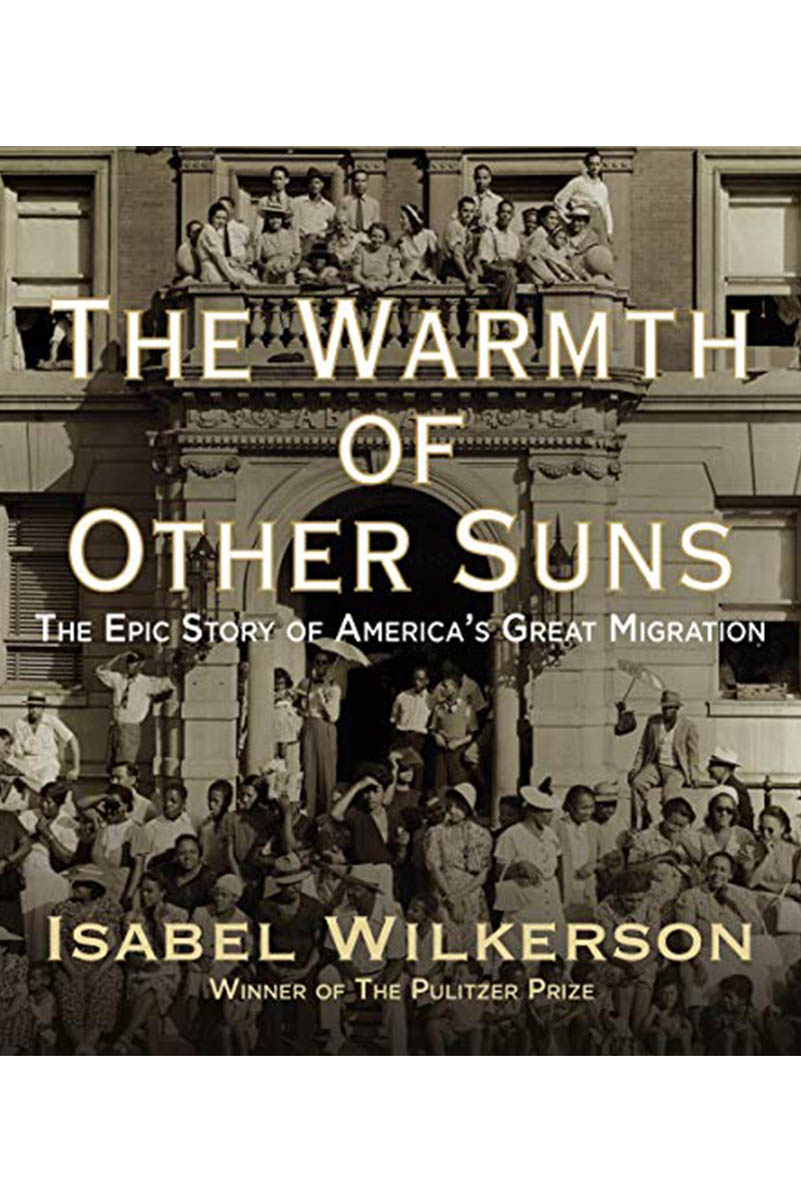The Warmth of Other Suns
by Isabel Wilkerson
“Ida Mae Gladney, Robert Foster, and George Starling each left different parts of the South during different decades for different reasons and with different outcomes. The three of them would find some measure of happiness…each found some measure of satisfaction because whatever had happened to them, however things had unfolded, it had been of their own choosing, and they could take comfort in that.”
Isabel Wilkerson’s first novel, The Warmth of Other Suns, analyzes the lives of three African-Americans who migrated North from the Jim Crow South during the turn of the 20th century, in a period best-known as the Great
Migration. One of the most essential differences between Wilkerson’s writing style and others who have written about the Great Migration is that she treats her book as a novel. She forms her book as a complex story, and not as a robotic textbook. She has a knack for storytelling and for fully engaging her audience into the time period she analyzes with such seeming ease. She also won the Pulitzer Prize in Journalism. Wilkerson herself was a part of this exodus; her parents migrated from Georgia to Washington D.C. Her personal connection to the history she tells is clear in her writing.
Wilkerson begins her novel by introducing three black Americans who took part in the Great Migration. She lays out the backstories of Ida Mae Gladney, a black woman living in Chickasaw County, Mississippi, in the 1930s;
George Swanson Starling, who was living in Wildwood, Florida, in the 1940s; and Robert Joseph Pershing Foster, who was living in Monroe, Louisiana, in the 1950s. Wilkerson begins by describing their lives in the South, doing so incredibly accurately from her extensive research and interviews with more than 1,200 people. The first 100 or so pages are under the chapter, Beginnings, in which Wilkerson explains the inherent soul-sucking environment of being black in the South—of the crushing field work, incessant race-related murders, the engulfing poverty that many faced, and the Jim Crow laws that dictated their every move. It’s evident that the migration was inevitable; Wilkerson makes clear that the South offered black Americans a life no one would happily accept. Wilkerson calls the Great Migration a search for a “kinder mistress”—a land that wouldn’t tear down its occupants in the same way.
The Great Migration was unlike any other of its time (The Gold Rush, the Trail of Tears) in that of its mass and complete reconstruction of the American economy and population make-up. It also was the least taught about in schools. Wilkerson’s intense research almost makes up for the fact that many of her readers have little to no knowledge of the Great Migration. The Warmth of Other Suns, is Wilkerson’s chef d’oeuvre—it’s a masterpiece. Isabel
Wilkerson wrote another novel recently, Caste: The Origins of Our Discontents (2020), but it cannot compare to the immense power of her first novel.



